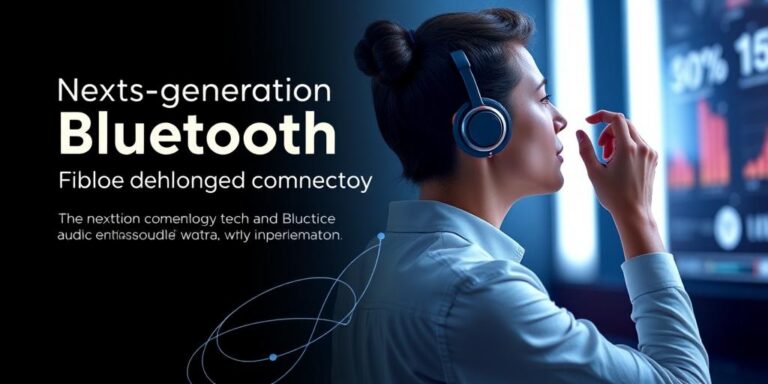Next-Generation Bluetooth: Enhancing Wearable and Audio Experiences (2025)
Bluetooth technology has become an indispensable part of our daily lives, connecting our smartphones to headphones, smartwatches, and a plethora of other devices. As we move towards 2025, the next generation of Bluetooth promises to revolutionize wearable and audio experiences. This article delves into the expected advancements, improvements, and potential impacts of this technology.
Current Bluetooth Limitations
Before exploring future enhancements, it’s essential to understand the current limitations of Bluetooth:
- Bandwidth Constraints: Current Bluetooth versions can struggle with high-fidelity audio and data transfer.
- Energy Consumption: Battery life remains a significant concern for wearable devices.
- Range Limitations: The effective range can be limited, especially in environments with interference.
- Security Vulnerabilities: Older versions have known security flaws that need addressing.
Expected Enhancements in Next-Generation Bluetooth
Several key improvements are anticipated in the next generation of Bluetooth:
- Increased Bandwidth: Enhanced bandwidth will support higher quality audio codecs, enabling lossless audio streaming to wireless headphones and speakers. This also benefits data-intensive applications in wearables, such as real-time health monitoring.
- Improved Energy Efficiency: New protocols and optimizations will reduce power consumption, significantly extending the battery life of Bluetooth-enabled devices. This is crucial for the proliferation of smaller, more efficient wearable devices.
- Extended Range: Expect improved signal strength and range, allowing devices to maintain stable connections over greater distances. This is particularly beneficial for smart home applications.
- Enhanced Security: Strengthened encryption and authentication protocols will mitigate security risks, ensuring safer data transmission and device pairing.
- Better Multi-Device Connectivity: Enhanced capabilities for connecting to multiple devices simultaneously without sacrificing performance. Imagine seamlessly switching audio between your phone, laptop, and smartwatch.
Potential Impacts on Wearable Devices
The next-generation Bluetooth will significantly enhance the capabilities and user experience of wearable devices:
- Advanced Health Monitoring: Wearables will offer more accurate and continuous health monitoring, with real-time data transmission to smartphones or healthcare providers.
- Immersive AR/VR Experiences: Higher bandwidth and lower latency will support more immersive augmented and virtual reality experiences through wearable displays and controllers.
- Improved Smartwatch Functionality: Smartwatches can become more independent from smartphones, with better connectivity for calls, messaging, and data syncing.
Impacts on Audio Experiences
Audio enthusiasts can look forward to dramatic improvements in wireless audio quality and convenience:
- Lossless Audio Streaming: High-fidelity audio streaming without compression artifacts becomes a reality, offering a listening experience comparable to wired headphones.
- Spatial Audio Support: Next-gen Bluetooth will facilitate more sophisticated spatial audio processing, creating immersive soundscapes for music, movies, and games.
- Enhanced Noise Cancellation: Improved data transmission and processing power will enable more effective and adaptive noise cancellation algorithms.
Conclusion
The next generation of Bluetooth promises significant advancements that will transform wearable and audio experiences. With increased bandwidth, improved energy efficiency, extended range, and enhanced security, it is poised to unlock new possibilities for device connectivity and functionality. As we approach 2025, these improvements will drive innovation and create richer, more seamless user experiences across a wide range of devices.




